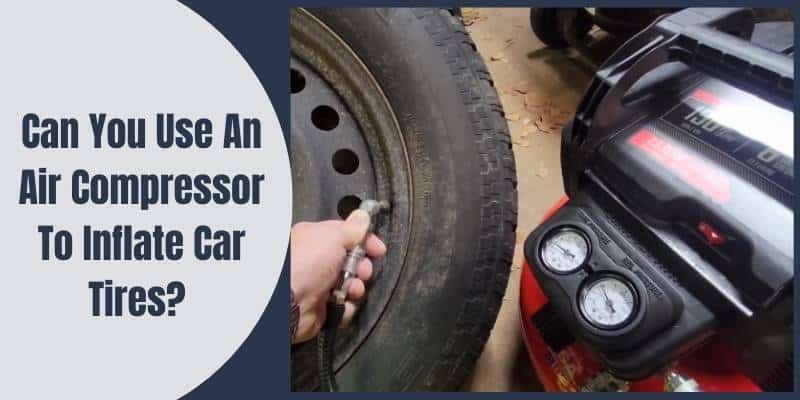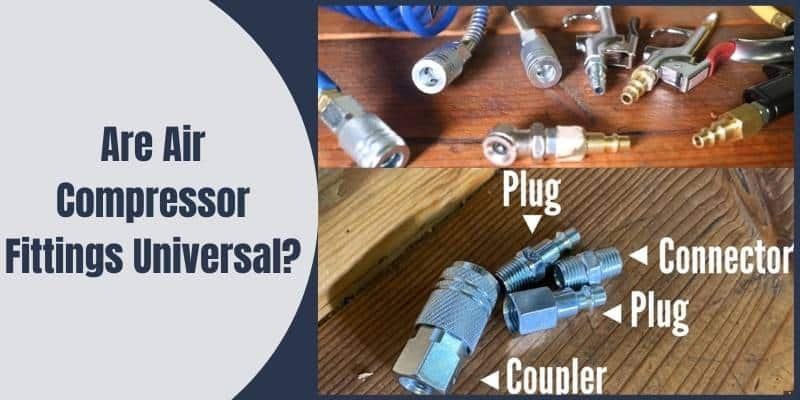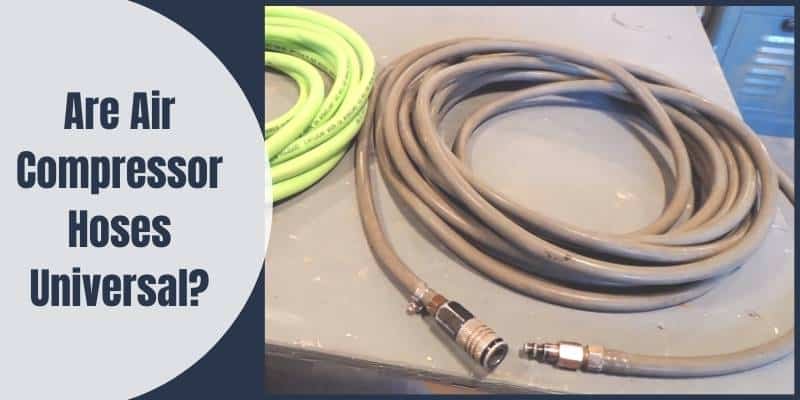Disclosure: This post contains affiliate links and I will be compensated if you make a purchase after clicking through my links. Learn More
What happens if you have a flat tire and find yourself in the middle of nowhere without the ability to repair your tires? Is there a chance you might devise a different plan to get your automobile back on the road as quickly as possible?
You can use an air compressor to properly re-inflate your tires, but doing so will ensure you can successfully drive your car again. Below is a guide to everything you need to do this properly;

Can You Use An Air Compressor To Inflate Car Tires?
Any tire, even vehicle tires, may be inflated using an air compressor. Most of the time, you can use them to inflate tires immediately or to fill a container with compressed air from a compressor.
A tire pressure gauge and a plugin tire valve adaptor are necessary to inflate automobile tires when using an air compressor. The use of a combined tire inflator with a meter is another option.
If you use a different gauge to fill the tire, check the pressure often as you fill the tire.
How to Use an Air Compressor on Your Flat Tire?
An air compressor can repair a flat tire with the right tools and preparation. Here are some pointers on how to fix a flat tire with an air compressor:
Examine the tire pressure
Use the gauge to check the tire pressure. Put a little dot or bead behind the tire pressure gauge and quickly press it into the tire’s valve stem’s center. The sound of air escaping from the tire should be audible.
Prepare the air compressor
Each tire’s stem cap is on the valve stem. Take it off and store it safely for replacement once you have finished inflating the tire. To prevent losing any more air from the tire before you inflate it, you should do this after you have set up the air compressor.
It would be best to place the tire you want to inflate reasonably close to the air compressor. Place it close to the air compressor because moving the vehicle while attempting to fix a flat tire will be impossible. Connect the compressor to the hose. Now the compressor can push that air into the valve system. If the nozzle has a safety position, turn it on.
Since most air compressors are electric, you must ensure a power supply is close by, or you can even plug it into a car outlet. Make sure the voltage can power the compressor. After connecting the compressor, fasten the hose to the tire’s valve stem and start the machine.
The compressor motor would turn on and let air flow into the compressor.
Start the tire’s inflation
It would help if you inflated the tire slowly. You may avoid over inflation of the tire in this manner. The tire could sustain catastrophic damage if it is overinflated. Keep a close watch on the tire pressure and turn off the air compressor. If you do not have a digital or automatic inflator, do this as soon as you reach the desired pressure.
Finish the Job
Press down on the tire gauge to release some pressure if you discover that you have inflated the tire with too much air. Remove the hose and put on the stem cap after the air pressure has reached the right amount. Do not panic if you hear air hissing when you remove the hose; this is normal.
Selecting the Right Size Air Compressor for Filling Tires
Selecting the right size air compressor for your tires is very important. It is to prevent overinflating your tires, which could sometimes result in the tire bursting. Here are some tips on how to select the correct size air compressor for your tires;
PSI
The maximum PSI rating of the air compressor may be the most crucial component. The air pressure that the compressor can produce is measured in PSI (pounds per square inch).
You won’t be able to fully inflate the tire if the tire demands more pressure than your compressor can deliver. Instead, the tire will only expand to the compressor’s maximum pressure output.
CFM
The CFM rating of the compressor is another crucial element. The rate of flow the compressor can produce is measured in CFM (cubic feet per minute).
It primarily affects how quickly and effectively you can fill your tires. It’s crucial to remember that you should always calculate CFM with air pressure.
Read More: Does tank size affect CFM?
Tank Size
How long it takes to fill your tires and how long the compressor pump needs to run will depend on the air compressor tank size. A 1-gallon tank should be enough to do the task in one sitting. It will do this in one sitting if you are topping off one or two tires (adding a few pounds of pressure to each tire).
However, it will generally take many cycles to fill a tire if you’re inflating it from scratch; the bigger the tire, the longer it will take.
Duty Cycle
The duty cycle rating of an air compressor specifies how long the pump should be running during a specific usage cycle. For instance, a 50% duty rating implies the compressor pump shouldn’t run for more than half the time you’re using the compressor. It means the pump should have a minute off for every minute it is running. It helps prevent the pump from overheating and wearing out.
An Alternative To Using An Air Compressor To Inflate Car Tires
Air volume is the primary distinction between a compressor and a bicycle pump. As an alternative to using a compressor, you can pump your automobile tire with a bicycle pump. They can pump up bikes to 80 psi of pressure.
Before effectively re-inflating your automobile tire, you need to pump it with the bicycle pump more than a hundred times. You will need a lot of patience for this technique. Although it will take a while, it is not insurmountable.
Frequently Asked Questions
Will a 1-Gallon Air Compressor Fill a Car Tire?
If you are topping off one or two tires, a 1-gallon tank may suffice for you to do the task in one sitting.
What PSI Should You Set an Air Compressor for to Fill Tires?
Personal vehicles like private cars, SUVs, and motorcycles require less PSI, 32 to 36 PLS is recommended. But for heavy-loaded vehicles such as trucks and lorries, 100 PSI may be required.
Can I Inflate Truck Tires With an Air Compressor?
The majority of any-sized compressors can fill small to medium-sized tires. However, they might not perform as well as big truck tires. The most crucial components are the compressor’s PSI and CFM capacities.
Will a Pancake Air Compressor Fill Tires?
Using a pancake air compressor to inflate your tires might cause immediate damage. Do not adjust the compressor’s psi to the same pressure as your tires. The filling will take far too long.
How Long Will My Tires Take to Inflate?
It can take several minutes of continuous pumping to fill each tire if your tires are low on pressure. The process could take as little as 10–20 seconds if you have recently filled your tires and are simply topping them off.
Bottom Line
Keep a portable compressor close at hand whenever you embark on a lengthy journey in case the unexpected occurs. Always check the tire pressure frequently, especially before a long trip. You can also carry a spare tire in case your tire loses pressure. It may also be helpful if trying to pump up your tire causes harm.


